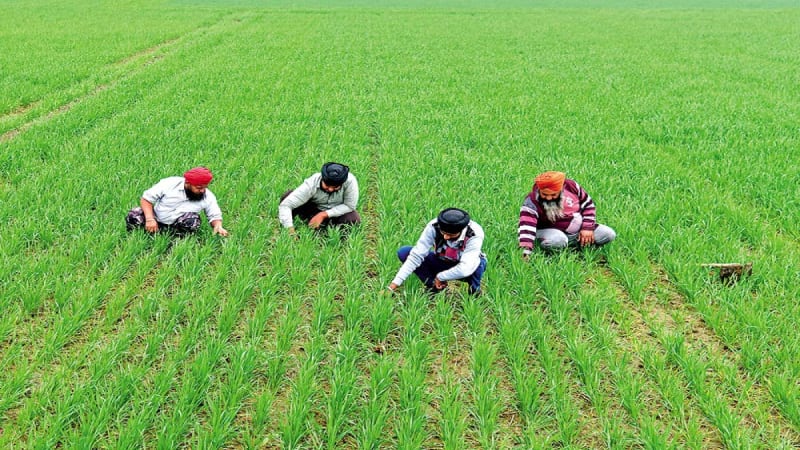In Allahabad (Prayagraj), a city where the Ganga and Yamuna nurture fertile lands, agriculture is the heartbeat of millions. Uttar Pradesh (UP), India’s agricultural powerhouse, has long aimed to transform its fields into global markets. The Uttar Pradesh Agriculture Export Policy 2025 builds on earlier efforts—like the 2019 policy—to double farmers’ incomes, enhance export value, and make UP a leader in sustainable, value-added agri-exports. While specific details of the 2025 policy are still emerging, insights from recent trends, government initiatives, and past frameworks (like the 2019 policy and its 2021 amendment) paint a promising picture. This human-friendly, SEO-optimized guide explores the likely goals, strategies, and impact of the 2025 policy, tailored for farmers, students, and businesses in Prayagraj and beyond.
What is the UP Agriculture Export Policy 2025?
The UP Agriculture Export Policy 2025 is expected to be a strategic roadmap to amplify the state’s agricultural exports, aligning with India’s $100 billion agri-export goal by 2030. Building on the 2019 policy’s aim to hit $2,524 million (₹17,970 crores) by 2024, the 2025 iteration likely ramps up ambition with:
-
Focus Areas: Value-added products (processed mangoes, organic spices), organic farming, and eco-friendly crops.
-
Key Crops: Mangoes, rice, amla, bananas, and millet—UP’s export stars.
-
Goals: Increase export value to ~₹50,000 crore in 3-4 years, up from ₹20,000 crore in 2023-24.
-
Farmer Benefits: Higher incomes via global market access and subsidies.
Rooted in UP’s 669 lakh MT foodgrain output (2023-24) and leadership in mangoes, sugarcane, and milk, the policy aims to make farmers in Civil Lines, Naini, or Jhunsi global players.
Why the 2025 Policy Matters
UP’s 23 million+ farmers—93% smallholders with under 2 hectares—face challenges like low prices and perishable crops. The 2025 policy, evolving from 2019’s successes (5.5% export growth to ₹19,000 crores in 2022-23), tackles this head-on. Here’s why it’s a game-changer:
-
Income Boost: By linking farmers to international buyers, it promises better prices—think mangoes from Malihabad in US stores.
-
Job Creation: Agri-processing units and export hubs could employ thousands in Katra or Alopibagh.
-
Sustainability: Promotes water-efficient crops (pulses, millets) to suit Prayagraj’s climate.
-
Global Reach: Strengthens UP’s 4.89% share in India’s $48.15 billion agri-exports (2023-24).
For a farmer in Teliyarganj or a student studying commerce in Tashkand Marg, it’s a chance to tap into a trillion-dollar vision.
Likely Key Features of the 2025 Policy
While the full 2025 policy isn’t public yet, it’s expected to expand on 2019’s framework and recent moves like the Digital Agriculture Export Promotion Council (DAEP). Here’s what’s likely included:
-
Cluster-Based FarmingExpands export-oriented clusters for mangoes, rice, and amla—UP plans 100+ horticulture clusters by 2030.
-
Example: Malihabad’s 5-tonne Dasheri mango export to the US in 2024.
-
Subsidies and Incentives25% transport subsidies for air/sea shipments, easing costs for farmers in Handia.
-
₹10-40 lakh grants for cluster development (50+ acres).
-
Mandi fee exemptions for direct export purchases.
-
Value-Added ExportsPushes processed foods—mango pulp, amla juice, millet snacks—to fetch higher prices.
-
Supports food processing parks in Varanasi and Gorakhpur.
-
Infrastructure UpgradesMore cold storage, pack houses, and reefer vans to cut spoilage—vital for Prayagraj’s perishable crops.
-
Inland waterway transport from Prayagraj to Haldia, extending to Ayodhya.
-
Global Market AccessFunds buyer-seller meets and trade expos to showcase UP’s organic and indigenous goods.
-
Leverages Canada’s 2024 market access for Indian horticulture.
-
Tech and Training150 hi-tech nurseries (with Israel’s help) for quality saplings—2,000 farmers trained by 2024.
-
Digital tools via DAEP for traceability and market links.
-
Organic and Sustainable PushPromotes pesticide-free clusters and millets (Shree Anna) to meet global demand.
-
Aligns with India’s organic export growth (25.6% of agri-exports in 2022-23).
Impact on Allahabad’s Farmers and Economy
Prayagraj, with its fertile plains and proximity to export hubs like Varanasi, stands to gain big. Here’s how:
-
Farmers Win: A Naini farmer could earn ₹20,000-₹30,000 more yearly by exporting processed amla or organic rice, dodging local price dips.
-
Local Jobs: Agri-parks and warehouses in Allahabad could hire hundreds, from packers to techs.
-
Student Opportunities: Commerce students in Katra can explore agri-export startups or supply chain roles.
-
City Growth: Export revenue could fund better roads or schools in Mutthiganj and Salori.
The policy’s 46% export growth in 2023-24 (via DAEP) shows it’s already working—Prayagraj’s mangoes and rice are reaching the US and Gulf.
Challenges to Watch
No policy’s perfect. Here’s what could trip up the 2025 plan, and how UP’s tackling them:
-
Perishable Goods: Crops spoil fast—more cold chains and waterways aim to fix this.
-
Global Bans: Rice export curbs hurt markets—policy pushes diversified crops like millets.
-
Smallholder Limits: Most farmers lack tech—training and FPOs (Farmer Producer Organizations) bridge the gap.
-
Costs: Subsidies help, but farmers in Jhunsi need loans—banks are being roped in.
How to Get Involved
Want to tap into the 2025 policy? Here’s your move:
-
Farmers: Join FPOs or register on upagriculture.com for subsidies and training.
-
Businesses: Explore food processing units—contact Invest UP (invest.up.gov.in) for incentives.
-
Students: Study export logistics or agri-tech—check SHUATS Prayagraj for courses.
-
Locals: Attend trade expos in Varanasi or Lucknow to network with buyers.
Why Prayagraj Trusts the Policy
In a city where agriculture fuels life, the 2025 policy feels personal. Farmers in Phaphamau see their mangoes in Dubai; families in Rajrooppur save with stable crop prices. X posts in 2025 buzz about UP’s agri-export rise—Prayagraj’s at the heart of it. The policy’s local roots (cluster cells in all 75 districts) and global vision (trade meets) make it a trusted bet for growth.
Final Thoughts
The Uttar Pradesh Agriculture Export Policy 2025 is set to transform fields into fortunes, making farmers in Allahabad and beyond global stars. Boosting mangoes, millets, and processed goods with subsidies, tech, and market links, it’s a bold step toward a $50,000 crore export dream. For a farmer in Teliarganj or a student in Civil Lines, it’s not just policy—it’s a promise of prosperity.
